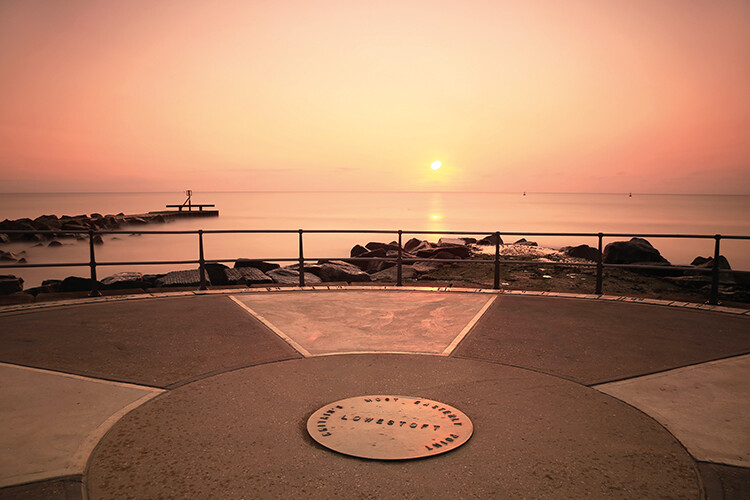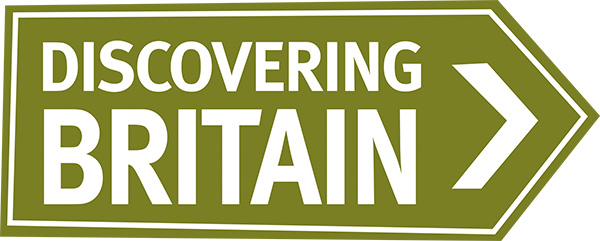
Rory Walsh visits Ness Point, the first part of Britain to see the rising sun
View • Coastal • East of England • Guide
Where are the most northerly and southerly places on the British mainland? Despite their fame, it isn’t John O’Groats and Land’s End. Some 18 kilometres north of John O’Groats is the outcrop of Dunnet Head. Land’s End, meanwhile, is 14 kilometres northwest of Lizard Point. The heel and toe of Cornwall’s foot-like coastline, Lizard Point is Britain’s most southerly spot, while Land’s End is nearly the furthest west. The toenail is another outcrop: Dr Syntax’s Head.
Completing the compass is Ness Point in the east, a small headland at Lowestoft. Visiting this brim of Britain is a curious experience. Tucked behind an industrial estate, a modest esplanade spans the sea wall. Two contrasting landmarks indicate Ness Point. While one lies flat, the other stands out. The Euroscope is a large disc in the ground. Looming above it is ‘Gulliver’, once the UK’s largest onshore wind turbine.
Gulliver’s whooshing blades harmonise with the sea’s waves. Balanced between the North Sea and Norfolk Broads, Lowestoft is one of Britain’s oldest settlements. Flint tools dated to 700,000 years ago have been uncovered in the crag-sand cliffs. From the Middle Ages, Lowestoft thrived through fishing, especially for herring. By the early 16th century, fishing huts lined the shore at Ness Point. The area became known as Beach Village.
In the 1840s, Lowestoft’s sea harvest lured civil engineer Samuel Morton Peto. It’s said that Peto regularly visited Ness Point to contemplate his plans for developing the town. After building Lowestoft railway station – and the line linking it to Norwich and Ipswich – Peto suggested that fish landed at Lowestoft in the morning could be eaten in Manchester for tea. Demand surged and Lowestoft’s catchment area flourished.
Discover more about Britain…
At Beach Village more than 2,500 residents were crammed into 500 small homes. There were shops, a church and 13 pubs. Yet castles built on sand can’t last. Overcrowding and declining fish stocks saw Beach Village’s fortunes wane. Then came the 1953 North Sea Flood. On the last night of January, a storm and spring tide combined to lift the sea’s mean level by 5.6 metres. Britain’s east coast was inundated.
Low-lying on sand and gravel soils, Lowestoft was badly damaged. Beach Village never recovered. The site was abandoned and soon cleared. As the eastern edge of Britain, Ness Point is the first place to see the sun every day. Now catching the wind, this quiet spot shows how the sea also rises.




